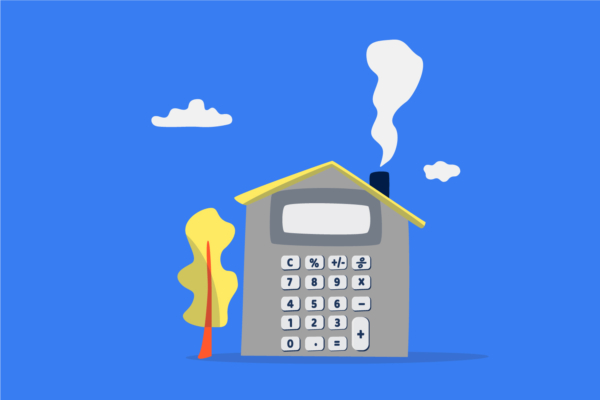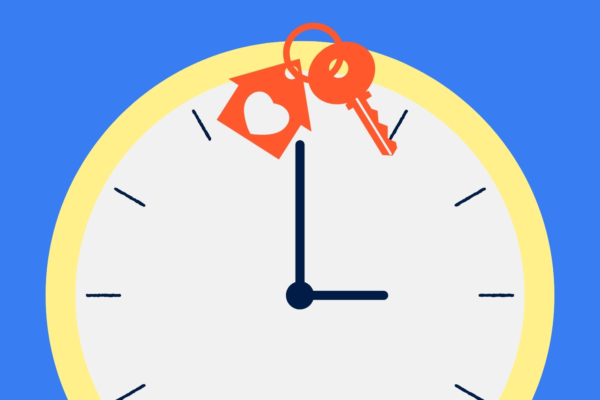
How to Become a Homeowner in 5 Years

Buying your first house is a significant decision that requires careful planning and preparation. It’s not a choice made on a whim, but rather a milestone that many people spend years working towards.
But, like many journeys in life, the path to homeownership isn’t always intuitive or straightforward. Sometimes you’ll even need a little help from your friends. (That’s us!)
In this guide, we will walk you through the essential actions you can take to become a homeowner in five years.
Let’s dive in!
How to Become a Homeowner in Five Years
From assessing your financial situation to looking for the perfect home, here are five things you can do in five years to prep yourself for homeownership.
1. Assess Your Current Financial Situation
Before embarking on your homeownership journey, it’s essential to assess your financial situation. Even five years out, understanding these key aspects can help you see where you stand, what needs to improve, and what you may be able to afford down the road.
Take these key steps to gain a clear understanding of your financial standing.
- Evaluate your income: Examine your income sources and calculate your monthly net income after deducting taxes and necessary expenses.
- Understand your expenses: Create a list of your monthly expenses. Determine which ones are necessary expenses (rent, food, transportation, etc.) and which ones are discretionary (entertainment, shopping, etc.)
- Calculate your debt-to-income ratio: Determine your debt-to-income (DTI) ratio by dividing your total monthly debt payments by your monthly income. Aim for a DTI ratio of 43% or lower to improve your chances of getting a mortgage.
By assessing your financial situation, you’ll gain insights that will inform your decisions and help you achieve your homeownership goals. Remember, a solid financial foundation is crucial— even long after you purchase the home.
2. Create a savings plan.
By creating a well-defined savings plan, you can stay on track and ensure that you have enough money for a down payment and other upfront costs.
Here are some basic steps to creating an effective plan.
- Set a specific savings goal: Determine the amount of money you need to save for a down payment, closing costs, and other homeownership expenses. Research the typical down payment requirements in your area and establish a specific target to work towards.
- Identify areas to cut expenses: Review your budget and identify areas where you can reduce or eliminate expenses. Consider cutting back on discretionary spending, and find ways to save on regular expenses like utilities or groceries.
- Automate your savings: Make saving a habit by automating your savings. Set up automatic transfers from your checking account to a dedicated savings account each month. This ensures consistent savings without the temptation to spend the money elsewhere.
By implementing a well-structured savings plan, you’ll be able to steadily accumulate the funds needed for homeownership. Regularly track your progress and make adjustments as necessary.
3. Build and improve your credit.
A strong credit profile is essential when applying for a mortgage. Lenders assess your creditworthiness to determine your interest rate and loan eligibility.
Looking at this five years out is important because it’ll give you plenty of time to make impactful changes, if necessary.
So pull your free credit report and work on the following:
- Understand the factors that affect your credit score: Familiarize yourself with the factors that influence your credit score, including payment history, credit utilization, length of credit history, types of credit, and new credit inquiries.
- Pay bills on time: Consistently pay all your bills, including credit cards, loans, and utilities, on time. Late or missed payments can significantly impact your credit score. Set up reminders or automatic payments to ensure timely payments.
- Reduce outstanding debt: Aim to pay down your existing debts to lower your credit utilization ratio. Focus on high-interest debts first and consider debt consolidation or negotiation with creditors to make repayment more manageable.
- Utilize credit responsibly: Wisely manage your credit accounts by keeping credit card balances low and avoiding maxing out your credit limit. Maintain a healthy mix of credit types, such as credit cards and installment loans, to demonstrate responsible credit usage.
Regularly monitor your credit report and address any errors promptly. Improving your credit does take time, so be patient and consistent with your efforts!
4. Exploring financing options.
Next up on the list is exploring financing options. Your ability to buy a house will most likely hinge on your ability to get financing, so it never hurts to start exploring your options early.
To get the best mortgage for your situation, it’s important to explore your financing options.
- Research mortgage lenders: Compare lenders to find those with competitive rates and favorable loan terms.
- Understand different types of mortgages: Familiarize yourself with fixed-rate mortgages, adjustable-rate mortgages (ARMs), and government-backed loans.
- Consider first-time homebuyer programs and grants: Look into government programs and grants designed to assist first-time homebuyers.
By researching and understanding your options, you’ll be better equipped to choose the right financing solution to get prequalified for when it comes time to buy.
5. Utilize a real estate professional.
Navigating the real estate market can be complex, so working with professionals who specialize in the field can be invaluable. Finding the right real estate agent will come in handy closer to purchase time.
- Find a reputable agent: Seek recommendations, read reviews, and interview potential agents to find one who understands your needs and has experience in your desired area.
- Understand the home buying process: Familiarize yourself with the steps involved in purchasing a home, from making an offer to completing the closing process. Your real estate agent can provide guidance along the way.
- Utilize their expertise to navigate the market: Rely on their knowledge of local market trends, property values, and negotiation strategies to guide your search and help you make informed decisions.
Working with real estate professionals can simplify the home buying process and increase your chances of finding the right home at the right price.
6. Find the right home.
Finding your new home is the most exciting part of the homeownership journey! To help you choose the right fit, think about the following.
- Identify your needs and priorities: Make a list of your must-have features and preferences in a home, such as the number of bedrooms, location, amenities, and proximity to schools or workplaces.
- Research neighborhoods and locations: Explore different neighborhoods to find areas that align with your lifestyle, preferences, and future plans. Consider factors like safety, access to amenities, transportation options, and property values.
- Visit open houses and attend showings: Take the opportunity to visit open houses and schedule showings to get a firsthand look at potential homes. Pay attention to the property’s condition, layout, and potential for future modifications.
By following these steps, you’ll be able to narrow down your options and find a home that fits your needs, wants, and budget. Remember, buying a home is a significant investment, so take your time and carefully evaluate each property!
Start Preparing Now for Your Homebuying Journey
Time goes by faster than you think, so it never hurts to get a jumpstart on your life and financial goals. By thinking about these five things, you’ll be well on your way to a new set of keys in five years!
Learn About Amplify Mortgage Loan Options
Ready to start the process? Talk to an Amplify Mortgage Loan Originator to start your homeownership journey!


